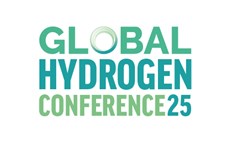Four companies collaborate on solar hydrogen park
Published by Oliver Kleinschmidt,
Deputy Editor
Global Hydrogen Review,
Four companies have joined forces to realise a world first in green hydrogen. On a site in Wallonia, Belgium, the world’s first solar hydrogen park based on Solhyd technology will be built in 2026.
This innovation was developed over a decade ago at KU Leuven University. The partners have signed a memorandum of understanding (MoU) and have begun building a complete value chain: from sunlight to industrial application of green hydrogen.
Unique collaboration, one integrated chain
This project brings together four players from different sectors, each with complementary expertise:
- Ether Energy: solar energy project developer. Owner and operator of the project.
- SunBuild: solar EPC expert. Designs and builds the solar installation with battery storage.
- Solhyd: technology partner. Supplies and maintains the hydrogen modules.
- Nippon Gases: hydrogen and industrial gases expert. Handles post-processing, storage and distribution of the hydrogen to industrial end users.
The sun-powered Solhyd modules (50 kW) will be integrated into a traditional solar park of ca. 2 MW-peak, with battery storage. The site will thus produce both electricity and hydrogen from solar energy. In future installations, the proportion of Solhyd modules will increase relative to the capacity of conventional solar panels. This creates a scalable model enabling solar parks across Europe to diversify their energy production and supply green hydrogen as well.
Solhyd: a paradigm shift in green hydrogen
Recently awarded a World Hydrogen Award, Solhyd’s technology produces hydrogen directly from sunlight and air, without liquid water, without heavy grid connection, and without rare metals. The system is modular, easy to install and radically simplifies the production of renewable hydrogen.
“This project is the first demonstration at commercially relevant scale and serves as a reference for further rollout. It is another concrete step in our growth. We are proving that green hydrogen can be approached in a pragmatic and scalable way. By harnessing the sun directly, we lower costs and drastically simplify the system. Together with our partners, we are delivering proof that it can be done.” Commented Jan Rongé, Solhyd.
Validated by industry
The involvement of Nippon Gases underlines the industrial relevance of the project: the hydrogen produced will be integrated into the existing value chain of industrial gases.
“Hydrogen has always been a key part of our product portfolio. For years, we have supplied hydrogen in high-pressure containers to sectors such as food, chemicals and pharma. Today, we are seeing hydrogen emerge as a growing market, including in combustion processes and in the manufacture of next-generation chips. This project is an important step forward and demonstrates that we can now also offer green hydrogen – exactly what our industrial customers need.” Added Johan Desmet, Nippon Gases.
Ether Energy and SunBuild bring years of experience in renewable energy and are developing new business models for solar parks. The sector faces several challenges (negative electricity prices, congested grids), and green hydrogen offers an additional path to reinforce the economic value of solar energy.
“This project demonstrates that sunlight can be valorised differently, through green hydrogen. It opens new perspectives for investors and is crucial for the energy transition.” Stated Pierre de Liedekerke, Ether Energy.
“Combining solar power and hydrogen on the same site is a major technical challenge using conventional technology. By linking innovation with industrial know-how, we demonstrate that it is now possible. We are building a new generation of hybrid energy parks that produce both renewable electricity and green hydrogen, thanks to Solhyd technology. It is an essential step towards sustainable energy autonomy for Europe.” Said Gilles Charlier, SunBuild.
Path to scale-up
The 50 kW demonstration site will remain operational for at least five years. The project will start operations in 2026. The next step for the consortium is a 2 MW project in 2028, followed by rollout in Europe and sun-rich regions worldwide. The solar hydrogen park is set to become a new instrument in the energy transition, with Solhyd technology at its core.
Today, solar parks across Europe generate green electricity. With this concept, they will also be able to produce green hydrogen, creating new revenue streams, reducing grid congestion, and increasing the value of solar projects during periods of low or negative electricity prices.
Read the article online at: https://www.globalhydrogenreview.com/hydrogen/14112025/four-companies-collaborate-on-solar-hydrogen-park/

